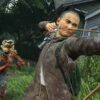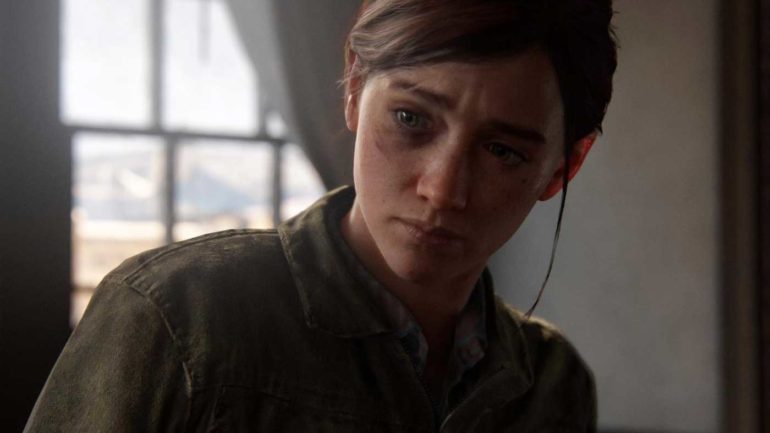SPOILERS BELOW. DO NOT PROCEED INTO THIS ARTICLE IF YOU HAVEN’T FINISHED THE GAME/DON’T WANT TO BE SPOILED.
We recently had the chance to Kurt Margenau, Co-Director of The Last of Us Part II. Nothing was off-limits in our chat, including absolutely anything that we came across in the game or things that played out during the story.
We got to chat about some of the themes in the game, beloved The Last of Us Part II characters and those that are new to the franchise, the ending, and future of the franchise, the brutality that game has been and will go on to be known for, for some time and also the leaks that have plagued the game over the last few months.
I feel like there’s a strange disconnect that happens when I played through the game and eventually encountered the dog squads. How is it that we’ve become so desensitised to stabbing people in the throat, but killing man’s best friend can be so uneasy. What led you guys to not only make this part of the gameplay but push it in marketing as well?
It’s a challenge to talk about the dogs in marketing, we don’t try to focus on it exactly. It’s a different type of enemy that ratchets up that tension and that’s something we wanted to bring on the gameplay side of things was something that shows the organisation of the WLF.
The fact that they have trained animals is ratcheting up from stuff you’ve seen in the first game. And we bring this kind of ‘superhuman’ ability, their ability to smell you which, again, adds even more tension to that experience. The game’s themes are challenging, people in the world are doing difficult actions and there are difficult choices made and we want the player to feel a little bit of that as they play through the game, even in these seemingly innocuous decisions on whether they kill an enemy or not.
As you said, you don’t really think about the humans but with dogs there, now you do think about it. And we try to bring you in alignment with Ellie and these difficult choices. How far are you willing to go? What are you willing to do to exact justice?
I love the game’s attention to detail in building the lore and sense of the world, obviously with the Washington Liberation Front and the Seraphites, but also with the people of Seattle whose stories are left behind post-Outbreak, even if they fell. The story of Hillcrest’s Boris Legasov is one I particularly loved following as it unfolded, does the Druck have a bible for The Last of Us somewhere with everything that the world holds?
I wouldn’t say there’s a bible of that, it comes out of natural discussion with the team. As we’re building a level we’re always looking for opportunities to tell other stories in the universe and something like the Boris story was kind of figured out through that. The designers can suggest things and then the writing team will find neats ways of incorporating it. A lot of it starts from the mechanical needs of the level, so once we decide we want a workbench somewhere we’ll ask what’s the story of why there’s a workbench here?
And we’ll say ‘Okay, what if a guy lived here, what if this was his base, what if he owned the store?’ and we can start building these narratives around the environment, writing the notes and coming up with the arc before placing the pieces around for players to discover. It’s just that we always want to pay off the people that go and explore off the beaten path and find these things that really enrich the world.
The game is far more brutal from the onset than any other Naughty Dog game. Has that tested poorly at times during development and are you concerned it might repel certain gamers?
I mean, we want to challenge people with the actions in the game and the story of the game, we don’t want to pull any punches about what this world is. For the most part, when we do our focus testing, we’re trying to make sure the character beats are landing, that the narrative turns make sense and that people are understanding everything.
We find that when the story is connected and working, people tend to be less focused on the violence, certainly not as much as the characters and relationships. But we’re not trying to shy away from the brutality of the world in The Last of Us.
Though Naughty Dog games tend to speak for themselves, marketing is still the ultimate tool for selling any product and I feel like, with the leaks throwing a lot of the game’s events out of context, you guys might have lost a bit of control over the messaging pre-launch. Has there been any alteration to the campaign leading up to launch?
It’s always unfortunate when people see stuff out of context, we try our best, within the framework of the game, to tell the story the way that we want to tell it. Experiencing the game is the true way to have the story told.
We did not expect things to happen like, but we’re just happy the game is launching soon, that people are starting to get their hands on it for us. We’re just trying to do the best we can in just letting the game speak for itself and let all of the people on the internet sort it out once the game is out. We try not to think about it.
The mid-game pivot, where players take over as Abby and see the three days in Seattle through her eyes, giving context to her journey and who she is, is bound to upset those who see The Last of Us as a ‘Joel or Ellie’ only experience. How early in the game’s development did you know we’d see what it’s like on the other side of our quote-unquote ‘hero’s’ narrative?
It was right from the beginning. It was the core premise of the entire story, to see both sides like this. To have a revenge tale told both from the perspective of someone who’s on their way to doing it and as someone who’s already done it. “Can they redeem themselves?” Seeing Abby have to find meaning again after she has already done the thing she wanted so badly, that was such an interesting contrast for us to have those two different, but similar, stories told. That, for us, was always the structure. Two halves of the same thing.
I got the sense from Lev and Yara that the Seraphites, as unlikely as it seems, pre-date the outbreak. I accept their indoctrination as kids, their disconnect from the ‘old world’ makes sense, but their mother being prepared to kill her son for being an apostate speaks to long-term fanaticism?
It’s not intentional for it to ‘pre-date’ the events of the game, the history of them is interwoven in the notes and things that you find starting with the martyr, the female leader of this group that turned radical after she was killed. It is meant to be a post-outbreak situation of what happens and how people become more tribalistic.
Joel, through his actions against the Fireflies, is a catalyst to all of the damage and pain that occurs in this game, nearly painting him as a tragic villain for the series. How difficult was it to pull the trigger on having causality catch up with Joel so early in the Part II experience?
It was definitely the structure from the beginning, when we got pitched the story there was some natural resistance to the idea of it. But when we started building it out and realising what we had, we all knew how compelling this concept was. How exciting it was.
There were initial discussions and conversations about it, it was pretty clear it was compelling and we went full force into it.
I love the attention that Naughty Dog pays to its characters embracing their identities. Of course, Ellie and Dina main event the narrative, though I’d love for you to talk me through how Lev came about, a rare representation for trans people in the medium. His coming to terms with who he is, in the face of literal death, is bound to resonate with people.
I can’t speak specifically for Neil in terms of the exact origins of the story, but Lev representing this, with him shaving his head and running away, it ties into this tribalistic hate of the other. It creates a conflict within a conflict. “Oh, you’re not following the rules, you’re an outsider now.” Having Abby get that perspective and realising that maybe they’re not that different, going back and helping them even though they’re supposed to be sworn enemies, that realisation and in that arc for Abby, Lev represents giving Abby that purpose.
I dunno if we’re able to talk about its genesis, but I’d love to hear about which sick bastard came up with the idea for The Rat King?
The Rat King was a team effort. A lot of concept work, we really wanted this ‘ultimate infected’. And it pushed Abby’s fairly simple task and asked how far she is willing to go for these kids, getting these supplies, pushing her deeper and deeper into trouble both physically and emotionally and against even crazier odds.
That hospital basement is ground zero of the infection for Seattle, so the oldest infected. We asked ourselves, what would an infected be that had been there longer than anything else? Combined together, inspired by the way that infected will grow into the wall, that we set up in the first game. We evolved it from growing into the wall into growing into each other and just being a clump of different infected together.
Despite depicting a great deal of violence, I feel like Part II has a lot to say about the cycle of violence itself. In what I assume is a deliberate parallel, Abby pleads to the Santa Barbara Rattlers to leave Lev alone which bore a heavy resemblance to Ellie’s efforts to save Joel’s life. It felt as though Ellie and Abby were really two sides of the same coin.
Absolutely, two halves of the same coin. Intentionally setting the challenge for ourselves by making you hate a character so much and then getting you to see the other side and understand that character to the point that you have those conflicted feelings.
So it’s really reassuring to hear you say that because that is the intentional take away from the experience.
There feels to be a real sense of finality to Ellie’s story with Part II. What begins as search for justice ends with a drawn out, bittersweet slow burn meditation on grief and letting go. I see Ellie’s resting of the guitar neck against the sill, now an iconic image thanks to the first game, as a beautiful send off for the character.
We always try to, with all of our games, try to tell a complete story with a beginning, middle and end. This is no different, we wanted to, like you said, give a sense of closure. Beyond that, we’re not ready to think about the future yet.
I’m hoping I didn’t misread a moment in Santa Barbara, were the radio folk Abby were speaking to actually regrouped Fireflies or was that all part of the Rattler trap?
That is a very common question, did you beat the game? Did you see the menu after you beat the game?
An eagle-eyed viewer would note that it is actually Catalina Island off the coast of Los Angeles, where the Firefly camp is meant to be. So, the people on the radio are the real Fireflies and we see Abby and Lev’s boat on the shore. It’s almost like an easter egg, but it’s meant to be a final, uplifting note. They made it.
The fact that they ask Abby on the radio about who operated the Firefly base and she answers that it was her dad, for us that was the validation of that. It shows they’re more cautious of her, and testing her legitimacy as a Firefly. But I agree, it’s a common question, and it’s unfortunate because it’s meant to be a hopeful beat.



